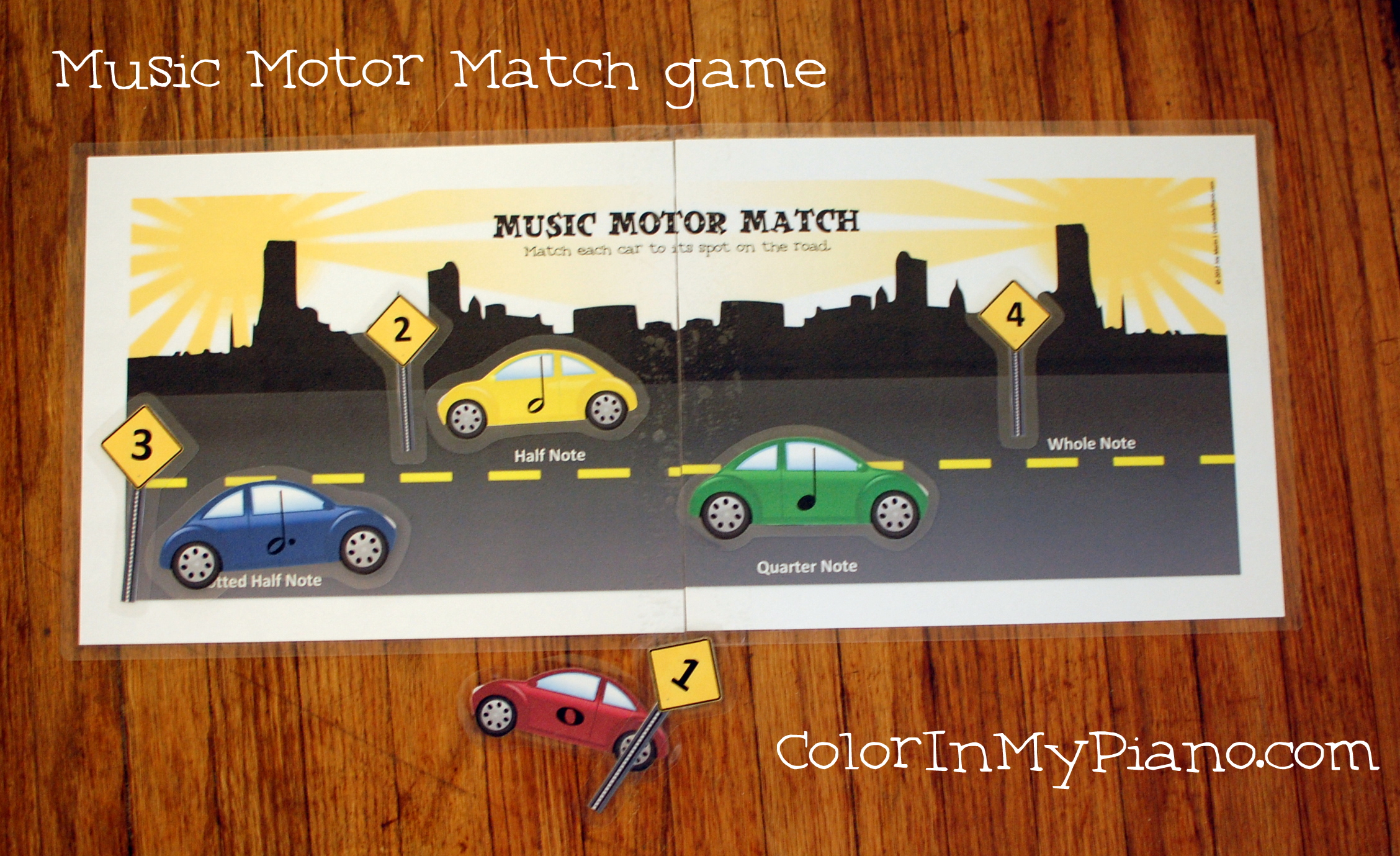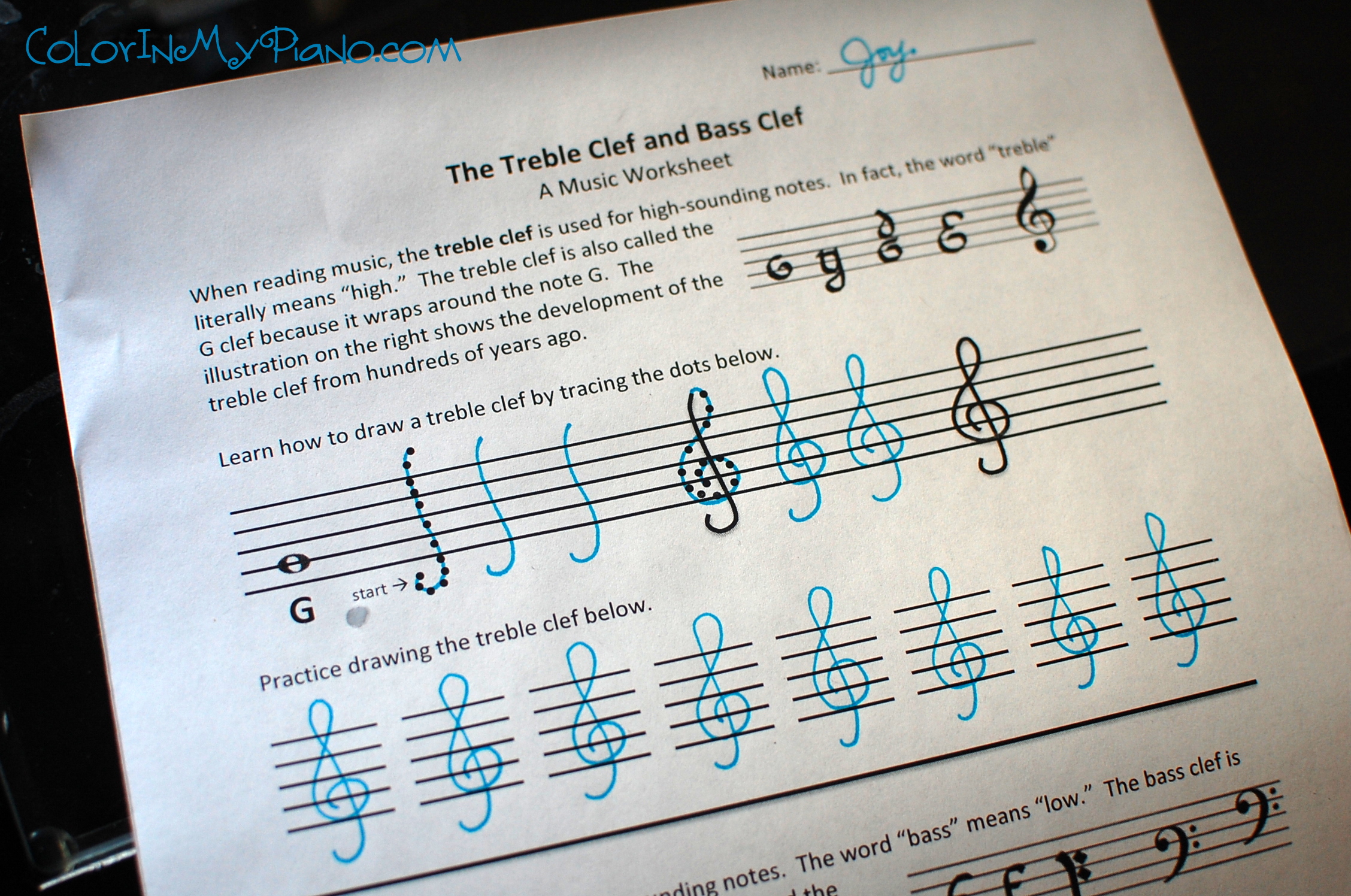For any of you fellow crafty-types out there, here’s a fun Pinterest-inspired project I completed lately:
Tag: music
My New Monthly Group Lessons: “Piano Parties”
 Now that I have enough students to do so, I have begun holding monthly group lessons with my students. I tried it a few times last year, but ended up with a poor turnout both times. Fortunately, now I have enough students to make it worth the effort. I call them “Piano Parties.”
Now that I have enough students to do so, I have begun holding monthly group lessons with my students. I tried it a few times last year, but ended up with a poor turnout both times. Fortunately, now I have enough students to make it worth the effort. I call them “Piano Parties.”
Right now, any of my students under age 15 are invited. My youngest private students are 4, so this makes for a very wide range of ages! Eventually, my goal would be to split them into groups by age/level, but for now, I am just happy to give them some kind of group lessons. I am keeping them very fun and informal.
Our first one was a back-to-piano pizza party last month, and I completely forgot to blog about it. Oops! 🙂 I’ll tell you about it now. Continue reading “My New Monthly Group Lessons: “Piano Parties””
My New Bookcase
A couple of weeks ago when the small bookcase next to the piano in my studio starting leaning rather precariously, I knew it was time to find a new one! Finding a bookcase that has shelves that are tall enough to hold music books is a challenge, however. The other challenge is finding something sturdy enough to support the weight of all those music books!
But I think I found the perfect solution. 🙂
My sister and brother-in-law along with my two nephews have been visiting for the last week (hence the lack of blog posts lately — sorry!). We made a trip out to IKEA yesterday, and I bought this BESTÅ shelf unit for $130:
Music Motor Match – A Rhythm Matching Game
A large percentage of my studio right now is beginner/early elementary students. I like having simple and short games to play with them at the end of the lesson that reinforce concepts we are learning in their books. Motor Music Match is a game that I created with these things in mind. Take a look:

The point of the game is to match each car and sign to its proper place on the road where the rhythm value’s names are. It’s a great game that only takes a minute or two, so it’s perfect for the end of the lesson where you have a little bit of extra time. It would also work well to keep a copy of this game in your studio’s waiting room area.
When I first tested out this game with a student, he said, “There should be another level where it’s harder.” That’s when I added the street signs. 🙂 So, to follow his suggestion, first ask your student to match the cars. When they are able to do that successfully, clear the road and add the signs to make the game a little harder.
To download the pdf for this game, visit the Printables > Games page and scroll down to the M’s for “Music Motor Match.” Enjoy!
Rhythm Value Cards for Dictation and More
Here they are…the rhythm value cards I mentioned in my post yesterday!

Continue reading “Rhythm Value Cards for Dictation and More”
Music Worksheet: Identifying Space & Line Notes on the Staff
Here’s a new free music worksheet that I just added to the Printables page:

This worksheet introduces the idea of identifying the space notes on the staff using the mnemonics FACE and All Cows Eat Grass. These are the only two mnemonics I use. I don’t teach separate mnemonics for the line notes anymore (like Every Good Boy Deserves Fudge or Great Big Dogs Fight Animals) because it’s simply too much to try to keep 4 different mnemonics straight! I have found that it’s easier for students to remember just two mnemonics and then learn to jump up a step from the nearest space note to identify a line note.
To download, visit the Printables > Worksheets page and scroll down to the I’s for “Identifying Space & Line Notes on the Staff.” Enjoy!
 Identifying Space & Line Notes on the Staff worksheets (170.6 KiB, 59,011 hits)
Identifying Space & Line Notes on the Staff worksheets (170.6 KiB, 59,011 hits)
Review: Rhythm Menagerie by Wendy Stevens
 Wendy Stevens from the ComposeCreate blog has created a wonderful rhythm resource called Rhythm Menagerie.
Wendy Stevens from the ComposeCreate blog has created a wonderful rhythm resource called Rhythm Menagerie.
The Basics
In Wendy’s own words:
“Rhythm Menagerie is designed to take away the distractions of note reading, articulation, and other music concepts so that students can focus on having fun while strengthening their rhythm!”
Rhythm Menagerie is a 93-page pdf for teachers to use with their students. The license permits teachers to print as many copies as they wish as long as they are using it with their own students. Rhythm Mengerie is for sale on Wendy’s website for $34.99. (Wendy has kindly offered to give Color In My Piano readers a limited-time discount, however — read to the bottom of this post to learn more!) Continue reading “Review: Rhythm Menagerie by Wendy Stevens”
Rollin’ Rhythms Worksheet Activity
The Amazing Keyboard Race
I had a wonderful extended weekend in Michigan, giving my presentations and spending time with my family! Now I’m busy back at work, playing catch-up. 🙂 However, I do have a little game I’d like to share with you today.
I am not the original inventor of this game, I’m sure — but in case you haven’t seen it before, here’s how to play this keyboard game with your beginner students!

Just Added: Treble & Bass Clef Worksheet
Today, a new worksheet was added to the Printables page, all about the treble clef and bass clef!

This worksheet uses dotted lines to teach the student how to draw the treble clef and bass clef. I also included a couple of illustrations in this worksheet showing the development of the clefs over the centuries. Our modern clefs still bear some resemblance to the letters G and F, which can be a helpful tool for students for remembering those landmark notes. Students will find this bit of history interesting and memorable as they learn about the clefs!
To download this worksheet, please visit the Printables > Worksheets page and scroll down to the T’s for “Treble & Bass Clef Worksheet.” Enjoy!
P.S.: Don’t forget to enter the giveaways from last week if you haven’t already. Winners are going to be announced this week starting tomorrow!
Just Added: “Gallery of Music” Symbol Drawing Worksheets
 Happy Valentine’s Day! I have a free printable to share today…
Happy Valentine’s Day! I have a free printable to share today…
This is a set of simple worksheets for having students learn to draw various music symbols. The worksheets can be used singly or in groups, depending on what concepts your students are currently learning. I would encourage students to use colorful crayons to draw the symbols.
Here are the symbols covered on each page:
- Quarter, half, dotted-quarter, and whole notes.
- Quarter, half, dotted-quarter, and whole rests.
- Single eighth note, beamed eighth notes, eighth rest, and dotted quarter note.
- Treble clef, bass clef, staff, and grand staff.
- Barline, double barline, repeat sign, and time signature.
- Forte, piano, mezzo forte, and mezzo piano.
- Sharp, flat, natural, quarter note with flat.
- Slur, tie, staccato, accent.
If you have suggestions for more symbols to include in additional worksheets, let me know!
To download this set of worksheets, visit the Printables > Worksheets page and scroll down to the G’s for “Gallery of Music – Symbol Drawing Worksheets.”
P.S.: I received an email yesterday from the MTNA Collegiate Chapter at Butler University, asking if I’d send a link to the survey they created about online marketing for piano teachers. They are looking for responses to help them with a session they will be presenting at the MTNA National Conference in NYC next month. Please take a minute of your time to help them out! http://tinyurl.com/butlersurvey2012
P.S.S.: Today is the last day to sign up to attend the MTNA National Conference at the early registration discount! Visit mtna.org to learn more. Hope to see you in NYC!
Teaching Tip: Achieving Fluency

Have you ever had a student play a piece with frequent hesitations throughout, even though you know they can play much better than that? This phenomenon can occur with all ages/levels of students. Why does this happen? What is going on when this happens? This article will examine possible causes of and solutions for a lack of fluency.
A lack of fluency could be caused by a number of things:
- A lack of the proper technique required for the executing the piece;
- A lack of familiarity of the notes of the piece;
- A tempo that is too fast for the student’s ability at that moment; or,
- A lack of mentally “chunking” the information on the page properly. The analogy I use to refer to Number 4 is that the students feels like they are wearing horse blinders, or are mentally experiencing tunnel vision.
















